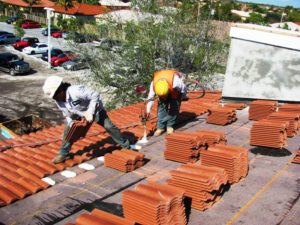Sometimes Ask the Expert questions are about specific details. In this case the question has to do with an opinion that is often expressed, but isn’t necessarily accurate. See below for the response from TRI President and Technical Director, Rick Olson:
QUESTION
Recently during Hurricane Matthew a few of my Spanish style concrete tiles were damaged, cracked with some pieces missing. When the roofer showed up to repair the roof I was told that the tiles were only cosmetic and the real roof protection is underneath. I’m sure water gets under the tiles but I would think that most of the protection is from the tiles-70% or more. What is the truth about these roof tiles?

RESPONSE
Historically (early 1900’s-1960) tiles that were installed were generally hand made or from home style manufacturing machines. With the low roof pitches in Florida, the wind driven rain could be allowed to enter the roof system, so the concept of a fully sealed roof system was used. 30 pound roofing felt was installed and a hot mopped 90 lb cap sheet was applied. The tiles were then installed to prevent the UV from breaking down the underlayment.
Fast forward to the tiles made after about 1965. They were manufactured with newer high speed machines utilizing European technology that made a very dense tile that would prevent water intrusion through the tile (permeability) and allow tiles to become the primary water shedding component. In Europe they were actually installed for centuries without any roof sheathing or underlayment, until recently.
The use of the sealed underlayment under the tile in Florida has continued over time because it provides a very good secondary barrier in the event there is either wind driven rain, or damage to the tiles during an event.
In summary, you are correct in your thoughts, but the stories passed down to roofing contractors carries the old thought from when tiles were not made to the newer standards. That said, there are still imported tiles that may not meet the requirements for permeability. All of the producing members of TRI will meet the criteria. If consumers choose to use an imported tile, we caution them to read and ask if the imported tiles will perform as the code requires.
